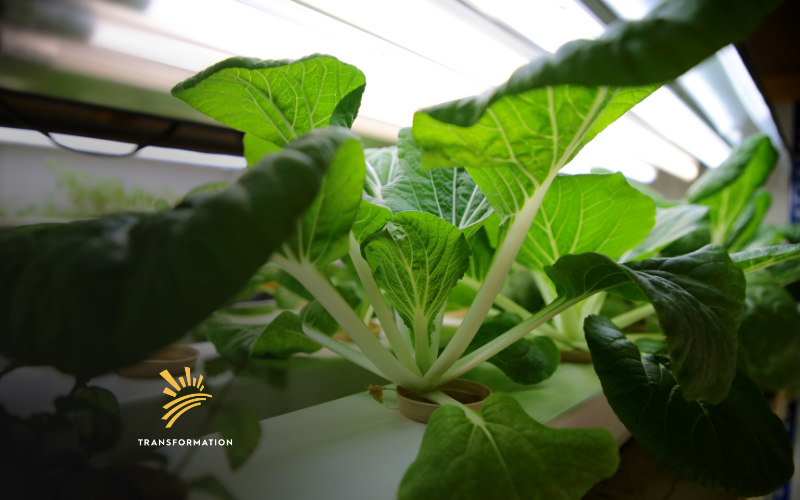How to Reform Food Systems to Combat Atmospheric Pollution
Air pollution, including greenhouse gasses such as carbon dioxide, also called atmospheric pollution, is a serious problem whose effects are felt across the globe. Besides factories and power plants notorious for releasing greenhouse gases into the atmosphere, food systems significantly contribute to this pollution.
Food production, processing, transportation, and disposal pollute the environment. The release of methane, carbon and other gases compromises air quality. All is not lost; it’s possible to combat atmospheric pollution and resultant negative impacts by reforming the agriculture sector.
Here is an overview of ten agricultural practices reforms governments and non-governmental organizations should embrace to reduce atmospheric pollution. These reforms will also impact food production positively for the benefit of current and future generations.
Promote Sustainable Agriculture
Sustainable agriculture advocates for farming processes that don’t pose a danger to the environment and are economically viable. It reduces air pollution by using fewer chemicals, reducing greenhouse gas emissions, and curbing soil erosion. Education, training, and financial incentives especially in developing countries will help sustainable agricultural practices
Reforming food systems to combat atmospheric pollution requires a comprehensive approach since food production and consumption play a significant role in causing carbon dioxide (CO2) emissions and other fluorinated gases.
This is due to the burning of fossil fuels used in agricultural machinery as well as the emission of gases in the transportation of food products along supply chains. Moreover, human activities such as inefficient land use and high levels of food waste also contribute to the problem. As such, reducing food waste can help lower total greenhouse gas emissions and improve food security globally.
Adopt Climate-Smart Farming
As the name suggests, climate-smart farming entails adapting agricultural activities to climate change and climate action, while being cautious about carbon emissions. Some practices it recommends are conservation tillage, crop rotation, and agroforestry. These farming methods are effective in minimizing the use of fertilizers and other chemical-based farm inputs that cause biodiversity loss, improving soil health, and sequestering carbon.
Encourage Local Food Systems
Local food systems have the potential to reduce air quality if well implemented. They reduce the distance harvested foods travel to reach the consumers. Consumers can support local food systems by joining Community Supported Agriculture (CSA) programs and buying from farmers’ markets instead of supermarkets and stores.
The World Bank has proposed that economically developed countries take action by improving their own practices. This will help developing nations meet their sustainable development goal of reducing CO2 emissions.
In addition, these nations should promote efficient farming methods such as vertical farming, composting, and integrated pest management; all of which can reduce their carbon footprint and increase crop yields at the same time.
Furthermore, transitioning diets away from animal-based foods towards plant-based ones can also lower total emissions significantly. All of these actions together will help mitigate climate change by reforming global food systems to be more environmentally friendly.
The government can support local food systems by providing financial incentives to farmers. They should also improve infrastructure to improve producers’ and consumers’ access to local markets.
Promote Efficient Transportation
The transport industry is among the leading causes of air pollution. Most of the CO2 released into the atmosphere is from buses, trucks, ships, and other modes of transport.
Concisely, transporting food for long distances generates huge amounts of greenhouse gases that pollute the air. Efficient transportation systems and mechanisms can significantly help to reduce these emissions, thus reducing the severity of atmospheric pollution. Some recommendations include consolidating shipments, optimizing transportation routes, and introducing fuel-efficient vehicles.
Lower Food Waste
Food waste is another leading cause of air pollution. As the food decomposes in landfills, it produces methane gas. These greenhouse gas emissions pollute the environment and form a blanket in the atmosphere together with other greenhouse gases. This blanket is responsible for the global increase in temperatures, a phenomenon referred to as global warming.
Reducing food loss and wastage reduction will reduce the emission of such pollutant gases. Lowering overproduction, investing in better storage facilities, and donating surplus food to food banks.
Promote Plant-Based Diets
Research shows that plant-based diets are less resource-intensive than animal-based diets. For example, large dairy farms release massive amounts of methane and carbon into the atmosphere. It’s possible to reverse this trend by educating communities about the benefits of plant-based diets. Financial incentives and public health campaigns will also come in handy to encourage more people to switch to these diets.
Reduce Food Packaging
Unknown to most people is that food packaging generates significant amounts of waste. Like food waste, the packaging materials end up in landfills. As the organic packaging materials decompose, they release carbon into the atmosphere. Burning non-organic packaging materials has the same negative effect on the environment.
Thus, reducing food packaging can significantly reduce emissions. This goal can be achieved through biodegradable materials, improved product design, and better recycling infrastructure.
Promote Renewable Energy
The food industry is among the top sectors that consume lots of energy in the form of electricity. Much of this energy is generated from non-renewable sources such as fossil fuels. Promoting the generation and use of renewable energy will reduce the emission of greenhouse gases. Some ways of promoting this noble shift include installing solar panels and wind turbines.
Improve Food Safety
It’s not possible to discuss human health without touching on food safety. Violation of food safety regulations often results in pollution. For instance, consuming contaminated food leads to disease outbreaks that generate significant waste.
These negatives can be avoided by creating better food safety regulations. Farmers and companies in the food industry should be educated and trained on how to produce safe food products.
Supporting research and innovation can significantly improve food systems and reduce emissions. Adopting new farming methods, such as vertical farming for fruits and vegetables.
Encouraging more farmers to do composting reduces waste. Private food and agriculture organizations, United Nations Environment Programme, International Food Policy Research Institute IFPRI, and governments can support research and innovation through funding and collaboration.
Conclusion
Reforming food systems is essential to combat atmospheric pollution and contribute to a better environment. Through concerted efforts, research, and innovation in sustainable agriculture, we can create meaningful changes that will bring us closer to achieving sustainability.
All stakeholders should come together to support research and innovation with adequate funding and collaboration. Governments, farm owners, and private food organizations should invest more effort into developing more efficient farming methods such as vertical farming.
Supporting independent regional organic farmers by reducing the amount of waste through composting can also make a significant contribution in the progress toward a clean future.
Lastly, it’s important for all of us to remember that sustainable agriculture is not just about taking action – it’s about making responsible decisions when it comes to specific policy proposals that shape the way our land is used for food production. Let’s build a cleaner environment together for a better future by promoting sustainable agriculture.





Leave a Reply